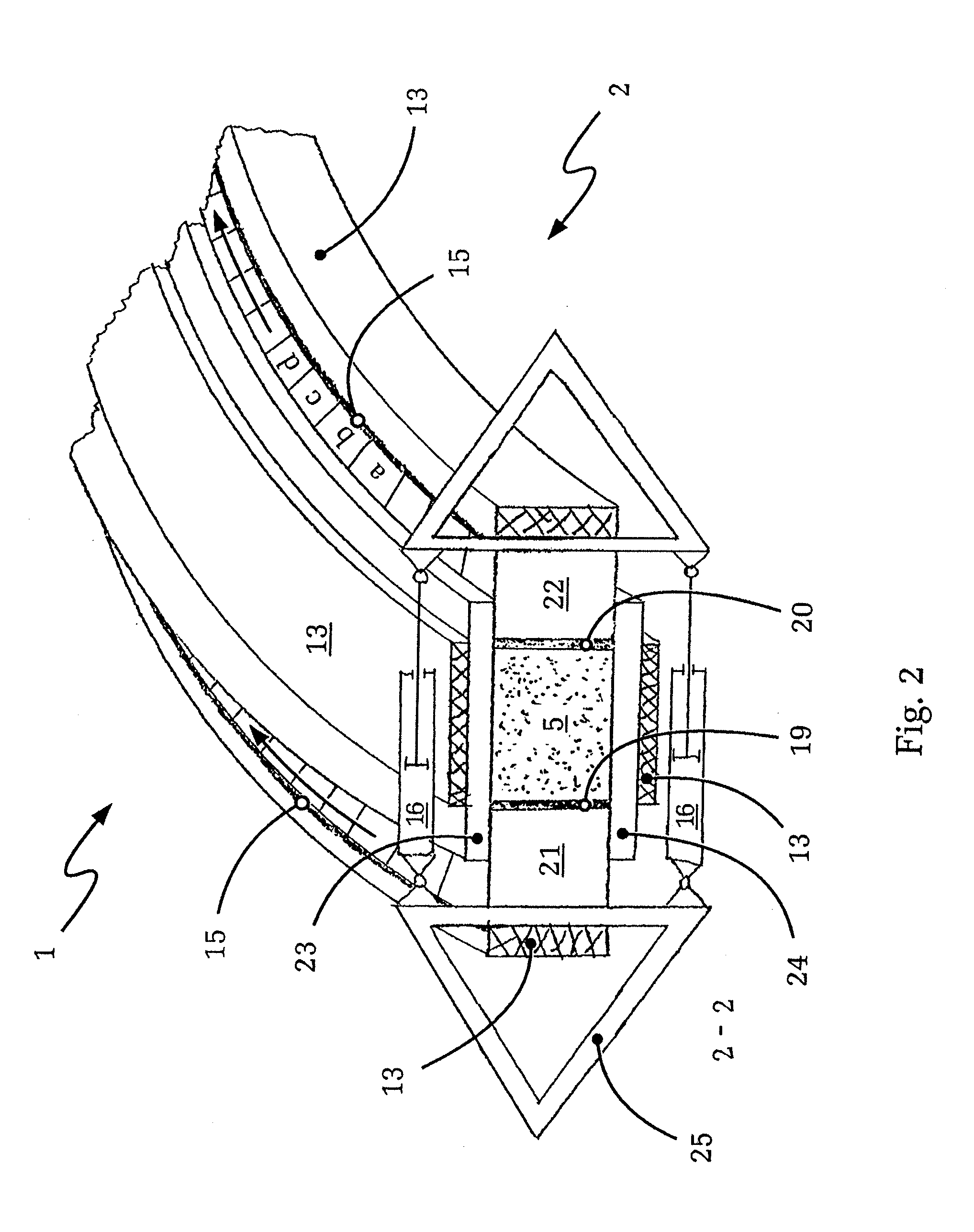Fibre composite profile component and process and apparatus for continuous production
a fiber composite and composite material technology, applied in the field of fiber composite profile components, can solve the problems increased production costs, and increased production costs, and achieves the effects of short cycle time, high production efficiency, and cost-effectiveness
- Summary
- Abstract
- Description
- Claims
- Application Information
AI Technical Summary
Benefits of technology
Problems solved by technology
Method used
Image
Examples
Embodiment Construction
[0081]FIGS. 1 and 2 show different views of a forming chain system according to the invention for producing the fiber composite molded part, likewise according to the invention, based on the inventive method also according to the invention.
[0082]In FIG. 1, first of all, two forming chains 1, 2 disposed in the forming chain system in a rotary manner are shown. In the embodiment shown, the forming chains 1, 2 are each guided over a pair of deflecting rollers 3, 4 and if necessary driven in the direction of movement through the forming chain system by the preform batch 5 by means of the deflection rollers 3, 4. The driving can, in particular, be CNC controlled in order to ensure the feed rate, as well as additional associated process variables, in particular such as matrix content, component cross section and duration of cuing, are maintained as precisely as possible.
[0083]In the embodiment shown, the preform batch 5 is formed by a number of fed continuous fiber strands 6, continuous w...
PUM
| Property | Measurement | Unit |
|---|---|---|
| weight ratio | aaaaa | aaaaa |
| length | aaaaa | aaaaa |
| radius of curvature | aaaaa | aaaaa |
Abstract
Description
Claims
Application Information
 Login to View More
Login to View More - R&D
- Intellectual Property
- Life Sciences
- Materials
- Tech Scout
- Unparalleled Data Quality
- Higher Quality Content
- 60% Fewer Hallucinations
Browse by: Latest US Patents, China's latest patents, Technical Efficacy Thesaurus, Application Domain, Technology Topic, Popular Technical Reports.
© 2025 PatSnap. All rights reserved.Legal|Privacy policy|Modern Slavery Act Transparency Statement|Sitemap|About US| Contact US: help@patsnap.com



